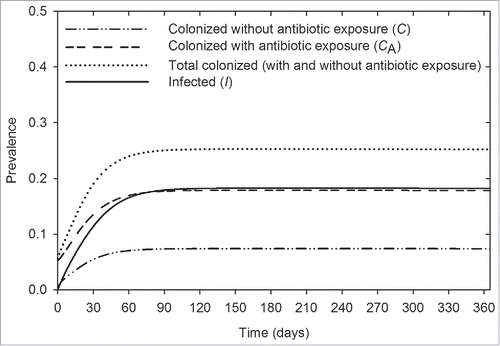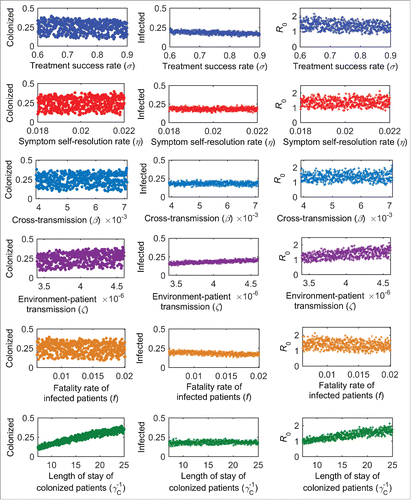Figures & data
Figure 1. A compartmental model describing the transmission dynamics of A. baumannii in an intensive care unit. The solid arrows represent entry to and exit from the 5 compartments: C, colonized without antibiotic exposure; CA, colonized with antibiotic exposure; I, infected; U, uncolonized without antibiotic exposure; UA, uncolonized with antibiotic exposure. The broken arrows represent the shed of bacteria into the environment (E) from colonized and infected patients, and the transmission from free-living bacteria in the environment to susceptible (uncolonized) patients.
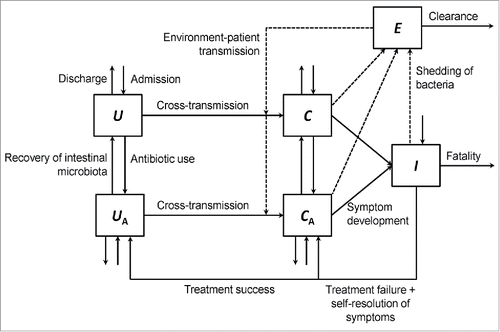
Table 1. Baseline input values of model variables
Table 2. Variation range for variables evaluated in sensitivity analysis
Figure 3. Effects of individual interventions on the prevalence of colonization (long-dashed lines), infection (short-dashed lines), total colonization and infection (solid lines), and the basic reproduction ratio, R0 (dotted lines). The following interventions were investigated: compliance with hand hygiene (A), environmental cleaning rate (B), environmental cleaning efficacy (C), length of stay of colonized patients (D), antibiotic prescribing rate (E), treatment duration of infected patients (F), and recovery of intestinal microbiota (G).

Figure 4. Relative effects of different interventions on the total prevalence of colonized and infected patients (A), and the basic reproduction ratio, R0 (B).
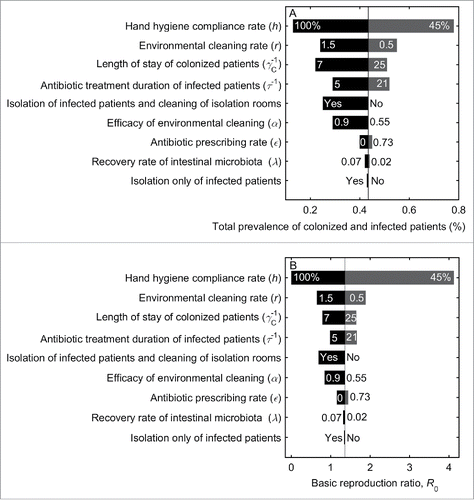
Figure 5. Prevalence of A. baumannii when the basic reproduction ratio, R0 < 1 (A) and R0 > 1 (B). When R0 <1, A. baumannii persists when colonized and infected patients are admitted (solid lines), and will die out if there is no admission of colonized and infected patients (broken lines). When R0 >1, A. baumannii always persists, once it has been introduced into the ward, irrespective of whether colonized and infected patients are admitted.
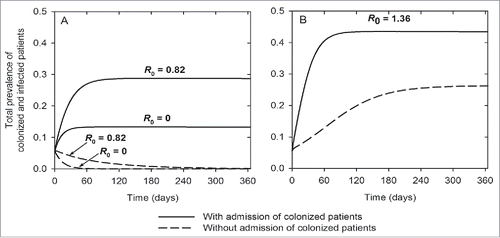
Figure 6. Effects of different combinations of interventions on the total prevalence of colonization and infection (A, C, E), and the basic reproduction ratio, R0 (B, D, F).
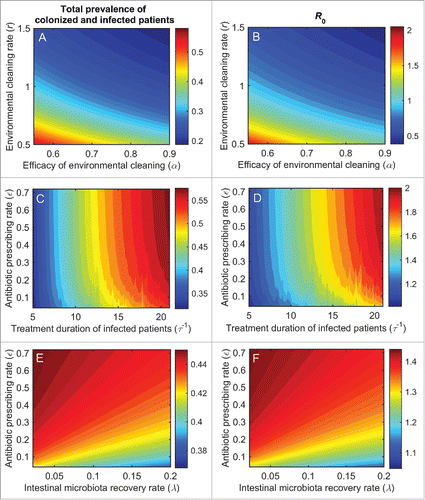
Figure 7. Effects of varying cross-transmission coefficient (β) and environment-transmission coefficient (ζ) on the prevalence of colonization and infection (A), and the basic reproduction ratio, R0 (B). β and ζ were set at 50 × 10−4 and 4 × 10−6 at baseline, respectively.
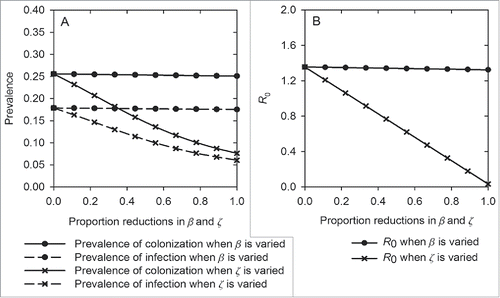
Table 3. Correlation coefficients

